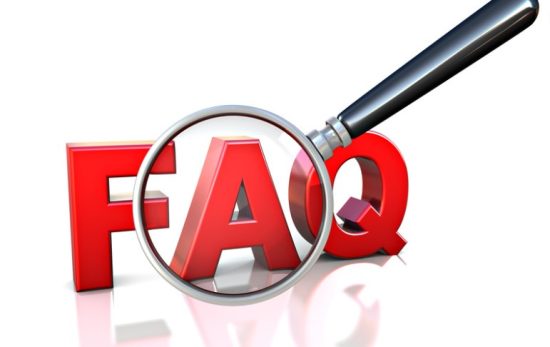Are you a hard-working employee who often incurs expenses to do your job? If so, then you’re probably familiar with the T2200 form. But if those four letters leave you scratching your head in confusion, don’t worry – we’ve got you covered! In this blog post, we’ll unravel the mystery of the T2200 and all its ins and outs. From eligibility to claiming expenses, we’ll break it down so that even tax novices can understand. So sit back, relax, and get ready to learn everything you need to know about the enigmatic T2200 form!
What is a T2200?

Tax Form T2200 is an essential document provided to employees by their employers. This two-page form, titled “Declaration of Conditions of Employment,” may ring a bell if you’ve worked in sales or any other job that involves frequent travel. It serves as the gateway for employees to claim expenses they incur while performing their duties.
With Form T2200, you have the opportunity to recoup some of the costs that come out of your pocket. Whether it’s running a home office, paying for mobile phone expenses, or using your car for work purposes, this form allows you to seek reimbursement for these specific unreimbursed expenses
Who is Eligible for the T2200 Form?
Form T2200 is specifically designed for employees who are required by their employers to pay expenses to earn employment income. It does not apply to self-employed individuals or those who have their expenses reimbursed by their employer. Deductions cannot be claimed for commuting costs or personal expenses such as tools and clothing.
However, there is an exception for employees who switched to remote work due to the COVID-19 pandemic. If you worked from home for at least four consecutive weeks and spent more than 50% of your time working remotely, you may be eligible to deduct home office expenses directly related to your work.
This means that if you meet the eligibility criteria outlined above, you can claim deductions on expenses like internet bills, office supplies, and a portion of your rent or mortgage payments.
What Expenses Can be Claimed on the T2200 Form?
Expenses can add up quickly when it comes to doing your job effectively. The good news is that under certain conditions, you may be able to claim these expenses on the T2200 form. To be eligible, your employment contract must require you to incur these expenses as part of your job, and you should not have received a nontaxable allowance for them.
So what expenses can you claim? Well, several categories fall under the T2200 form.
First off, if you’ve had any accounting or legal fees related to establishing your right to salary, those can be claimed. Additionally, travel expenses like meals, lodging, and transportation (excluding motor vehicle expenses) are eligible for deduction.
If you find yourself paying for parking during work hours but not at your main employer’s workplace, that expense can also be included on the T2200 form. And let’s not forget about office supplies – pens, paper, cleaning supplies – all of those consumable items necessary for getting the job done.
Salary paid to an assistant or renting an office space or meeting room for work purposes are also potential deductible expenses. If you use a motor vehicle for work-related purposes and need to cover operating costs and capital cost allowances (CCA), those too can make their way onto the T2200 form.
Last but certainly not least important is claiming work-space-in-the-home expenses. This allows employees who have dedicated home office spaces a percentage deduction based on their home-related expenditures related directly to earning income.
How Much Do You Get Back From T2200?

When it comes to the T2200 form and claiming your employment expenses, you might be wondering how much you can get back. Well, the amount you receive depends on the value of those expenses. Here’s how it works.
- When you claim an expense as a deduction on your taxes, it lowers your taxable income. This means that you won’t have to pay taxes on that specific amount. However, it’s important to note that this doesn’t mean you’ll receive the entire expense back as a tax credit.
- The T2200 form itself is just your employer’s report of the expenses that commissioned employees incur. It serves as documentation for the deductions you’re claiming. Once you have this form in hand, you’ll need to complete and submit another form called T777 to itemize your deductions.
- Form T777 allows you to list all of the eligible expenses that can be deducted from your income tax liability. By properly filling out this form, you can reduce the amount of taxes owed based on these deductible expenses.
So while filing a T2200 form gives employees like yourself the opportunity to claim their work-related costs, keep in mind that it doesn’t guarantee a full reimbursement or credit for those expenses. The actual amount will depend on various factors such as the value of the expenses and applicable tax laws.
How do I file a T2200 Form?
When it comes to filing a T2200 Form, the process is quite straightforward for employees. You don’t have to worry about filling out this form yourself; instead, your employer takes on that responsibility. In most cases, employers automatically fill out the form and deliver it to you along with other tax documents like your T4s.
It’s important to note that, unlike other tax forms, the CRA does not receive a copy of the T2200 form directly. However, this doesn’t mean that the document isn’t essential or should be disregarded. Consider it as a precautionary measure in case the CRA requests any supporting documentation for your tax return or conducts an audit.
By completing and keeping your T2200 form handy, you protect yourself from potential complications down the line. It serves as proof of eligibility for claiming specific expenses related to your employment.
After filling out Form T2200, you’ll need to itemize and provide details about your deductible expenses using Form T777. This separate form is where you list all eligible expenses allowed by the CRA for deduction purposes. Remember that only expenses included in the T2200 slip provided by your employer can be claimed on Form T777.
So remember, while filing a T2200 may seem similar to other tax documents in terms of its importance and record-keeping value, it plays a crucial role when it comes to claiming work-related expenses and protecting yourself during potential audits or review requests from the CRA.
What Is the Difference Between a T2200 And a T777?
If you thought the T2200 form was the only document you needed to navigate for claiming employment expenses, think again. There’s another form called the T777 that comes into play. But don’t worry, we’re here to break it down for you.
The T777 is known as the Statement of Employment Expenses and is primarily geared towards individuals who work from home or those employed on a commission or salary basis. While the T2200 form provided by your employer includes all the expenses required by your employment contract, the T777 goes a step further.
Unlike the T2200, which lists specific expenses based on your contract requirements, the T777 encompasses all deductible expenses permitted by CRA (Canada Revenue Agency). In other words, while you can claim what’s included in your employer-issued T2200 slip, it’s through filling out the comprehensive T777 that these deductions come into effect.
Navigating these two forms may seem like an extra step in managing your taxes, but understanding their differences will ensure that you maximize any eligible deductions. So keep them handy when filing your taxes and stay organized throughout this process.
How to Claim Work-from-Home Expenses?

Work-from-home expenses have become increasingly relevant in the wake of the COVID-19 pandemic. If you find yourself in this situation and want to claim these expenses, here’s what you need to know.
To claim work-from-home expenses, employees must include them on their personal income tax return. Rather than submitting the T2200 form with their return, they will document all deductible expenses on a T777 form called the Statement of Employment Expenses.
It’s important to note that if employees worked from home specifically due to the pandemic and are not using the temporary flat rate method for claiming their work-from-home expenses, they should use a separate form called T777S. This is known as the Statement of Employment Expenses for Working at Home Due to COVID-19.
When completing these forms, employees should ensure they have a copy of their completed and signed T2200/T2200S form in case of a review request from the Canada Revenue Agency (CRA).
By following these steps and documenting your eligible work-from-home expenses accurately, you can potentially receive deductions on your personal income tax return. It’s essential to keep track of all necessary forms and documents throughout this process for any future audits or inquiries.
Conclusion
Understanding the T2200 form and its implications can be beneficial for employees who incur expenses related to their jobs. This two-page document, provided by employers, allows eligible individuals to claim specific unreimbursed expenses on their taxes. However, it is important to note that not all expenses are eligible for deduction.
While navigating through tax forms may seem daunting at first glance, understanding how they work can ultimately save you money on your taxes. If you believe that you meet the criteria outlined above and have incurred qualifying job-related expenditures throughout the year – such as running a home office or travelling extensively – consider exploring whether filing a T2200 could benefit you financially.
Remember though – always consult with a qualified tax professional before making any decisions regarding deductions or submitting your tax returns. They can provide you with personalized advice based on your unique circumstances.
FAQs – What is a T2200?
1. What expenses can be claimed on T2200?
The following expenses can be claimed on Form T2200:
- Home office expenses: If you work from home, you can claim a portion of your rent, utilities, and other home expenses as a deduction.
- Travel expenses: If you travel for work, you can claim the cost of transportation, meals, and lodging.
- Meals and entertainment expenses: You can claim the cost of meals and entertainment that are directly related to your work.
- Professional fees: You can claim the cost of legal and accounting fees that are related to your work.
- Other expenses: There are a few other expenses that may be deductible, such as the cost of uniforms and tools.
2. Who qualifies for T2200?
Form T2200 is issued to employees who incur expenses in the course of their employment. To qualify for a T2200, you must meet the following criteria:
- You must be an employee, not a self-employed contractor.
- You must incur expenses that are directly related to your work.
- You must be able to substantiate your expenses with receipts and other documentation.
3. When should an employer issue a T2200?
Your employer should issue you a T2200 if you incur expenses in the course of your employment and you have asked for one. The employer is not required to issue a T2200, but it is a good idea to ask for one if you are eligible.
4. Are employers obligated to provide a T2200?
No, employers are not obligated to provide a T2200. However, if you are eligible for a T2200 and you ask for one, your employer should provide it to you.











